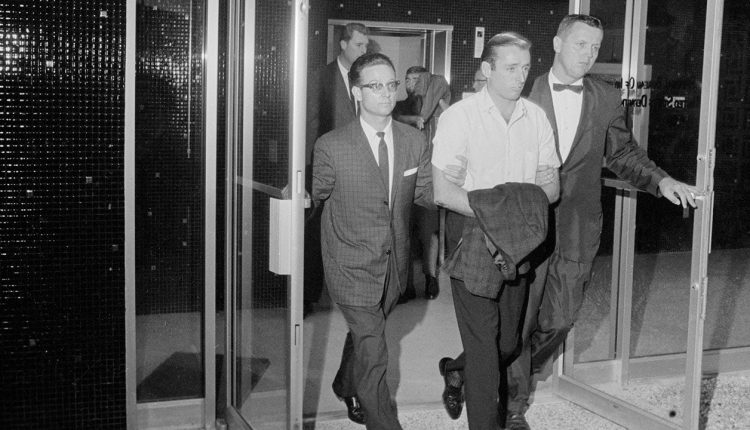Two men broke into the American Museum of Natural History in New York City and made off with millions of dollars in gems on this day in history, Oct. 29, 1964.
The theft was the largest jewel heist in U.S. history.
Among the 24 gems stolen by Allan Dale Kuhn, 26, and Jack Roland Murphy (also known as “Murf the Surf”), 27, were the Star of India, a 563.35 carat sapphire; the DeLong Star Ruby, a 100.32 carat ruby; and the Midnight Star, a black sapphire weighing 116 carats.
ON THIS DAY IN HISTORY, OCTOBER 28, 1886, STATUE OF LIBERTY IS UNVEILED
The Star of India and the Midnight Star are the largest sapphire and black sapphire, respectively. The DeLong Star Ruby is considered to be the “world’s most perfect” ruby, notes the Smithsonian Magazine.
The heist revealed that security at the American Museum of Natural History was shockingly lax.
Murphy and Kuhn were able to enter the museum after scaling a fence and a fire escape. Once on the fire escape, the pair tied a rope to a pillar above one of the windows in the J.P. Morgan Hall of Gems and Minerals, says Smithsonian Magazine.
Using the rope, one of the thieves “swung to an open window and used his feet to lower the sash,” said the magazine.
“We just swung in there and took the stuff.”
Their methods of thievery were also extremely low tech: the two used a glass cutter and duct tape to break into three display cases, and then used a squeegee to collect their loot.
They then split up and took separate cabs to avoid suspicion, said Smithsonian.
ON THIS DAY IN HISTORY, AUGUST 11, 1934, AMERICA’S MOST NOTORIOUS PRISONERS ARRIVE AT ALCATRAZ
“For us, it wasn’t anything,” said Murphy. “We just swung in there and took the stuff.”
It was later determined that the batteries in the display’s burglar alarms had been dead for months, something a geology curator at the museum did not even know. Additionally, none of the windows had burglar alarm, said Smithsonian.
What’s more: the museum had simply stopped locking an overnight security guard in with the priceless gems, the magazine added.
Despite the young age and criminal inexperience of Murphy and Kuhn, they did not leave much at the scene for investigators to work with. There were no fingerprints recovered on the display cases, said the Smithsonian.
They did, however, fall victim to their own greed, which would lead to their arrest.
ON THIS DAY IN HISTORY, AUGUST 23, 1973, A BANK ROBBERY IN SWEDEN LEADS TO ‘STOCKHOLM SYNDROME’
James Walsh, a vice and gambling plainclothesman received word from an informant that Kuhn, Murphy, and getaway car driver Roger Frederick Clark had thrown a lavish party at a hotel not far from the Natural History Museum.
“I think I got something for you,” the informant told Walsh. “There are three guys upstairs in this place … spending money like Wild. You’d think they were making it with a machine.”
Detectives received a search warrant for the hotel suite, and there they discovered marijuana, a floor plan of the museum, and books on gemstones, said the Smithsonian.
Clark walked in while the police were searching the room, and informed the police that Kuhn and Murphy had fled to Florida.
Kuhn and Murphy were eventually captured and arrested — and the three men were tried for the jewel heist.
The recovered stones remain on display to this day.
In January 1965, some of the stolen gems were recovered from a Miami bus terminal, reported the New York Times at the time. Among the recovered gems were the Star of India, but the DeLong Ruby remained missing.
The DeLong Ruby would eventually be recovered in September 1965, after the person who had acquired the gem agreed to return it in exchange for a $25,000 ransom, it was reported at the time.
Clark, Kuhn and Murphy pled guilty to their roles in the jewel heist, and the three were sentenced to three years at Rikers Island Correctional Facility in New York on April 6, 1965.
The story of the heist was made into a film, “Murf the Surf,” which was also known as “Live a Little, Steal a Lot.”
The American Museum of Natural History also substantially upgraded its security procedures, and the recovered stones remain on display to this day.
For more Lifestyle articles, visit www.foxnews.com/lifestyle.
Read the full article here

